Updated – May 04, 2025

The below presentation’s were provided by Comrade Dave Wyndham
Click or scroll on the pages to see more….
THE POPPY
Each November, Poppies bloom on the lapels and collars of millions of Canadians. The significance of the Poppy can be traced back to the Napoleonic Wars in the 19th century, over 110 years before being adopted in Canada. Records from that time indicate how thick Poppies grew over the graves of soldiers in the area of Flanders, France. Fields that had been barren before battle exploded with the blood-red flowers after the fighting ended. During the tremendous bombardments of the war, the chalk soils became rich in lime from rubble, allowing the “popaver rhoeas” to thrive. When the war ended, the lime was quickly absorbed and the Poppy began to disappear again.
The person who first introduced the Poppy to Canada and the Commonwealth was Lieutenant-Colonel John McCrae of Guelph, Ontario, a Canadian Medical Officer during the First World War. John McCrae penned the Poem “In Flanders Fields” on a scrap of paper in May, 1915 on the day following the death of a fellow soldier. Little did he know then that those 13 lines would become enshrined in the hearts and minds of all who would wear them. McCrae’s poem was published in Punch Magazine in December of that same year, and the poem later served as inspiration three years later for Moina Michael, an American teacher. Moina Michael made a pledge to always wear a Poppy as a sign of Remembrance.
During a visit to the United States in 1920, a French woman named Madame Guerin learned of the custom. Madame Guerin decided to make and sell poppies to raise money for children in war-torn areas of France. The Great War Veteran’s Association in Canada (our predecessor) officially adopted the poppy as its Flower of Remembrance on July 5, 1921.
Today, the Poppy is worn each year during the Remembrance period to honour Canada’s Fallen. The Legion also encourages the wearing of a Poppy for the funeral of a Veteran and for any commemorative event honouring Fallen Veterans. It is not inappropriate to wear a Poppy during other times to commemorate Fallen Veterans and it is an individual choice to do so, as long as it’s worn appropriately.
Thanks to the millions of Canadians who wear the Legion’s lapel Poppy each November, the little red flower has never died, and the memories of those who fell in battle remain strong.
In Flanders Fields
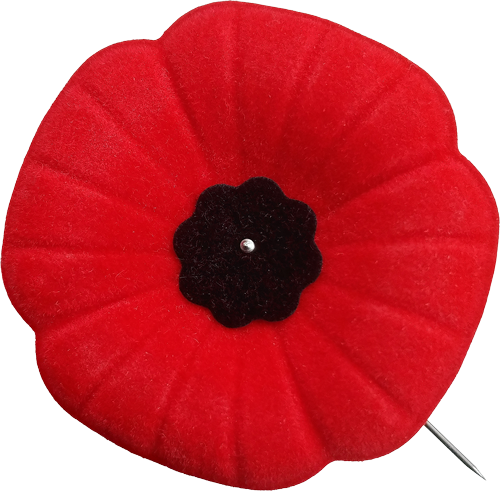
In Flanders fields the poppies blow
Between the crosses, row on row,
That mark our place; and in the sky
The larks, still bravely singing, fly
Scarce heard amid the guns below.
We are the Dead. Short days ago
We lived, felt dawn, saw sunset glow,
Loved and were loved, and now we lie
In Flanders fields.
Take up our quarrel with the foe:
To you from failing hands we throw
The torch; be yours to hold it high.
If ye break faith with us who die
We shall not sleep, though poppies grow
In Flanders fields.
Lieutenant-Colonel John McCrae
May 3, 1915
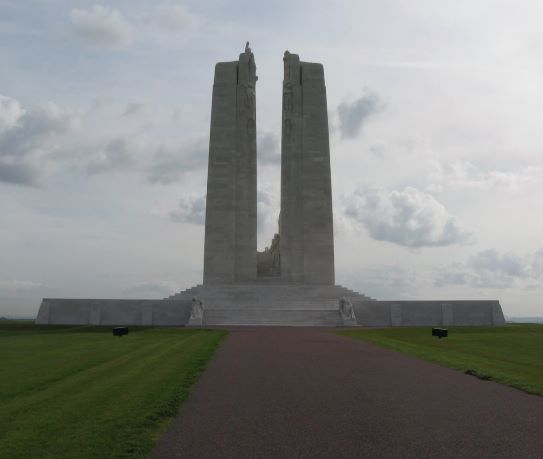
Photo by Duane Bach – May 2009
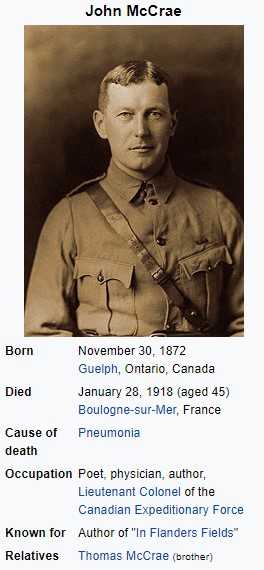
Brighton’s Cenotaph – 2012 …. A Look to the Past
Re-print provided by Comrade Dave Wyndham
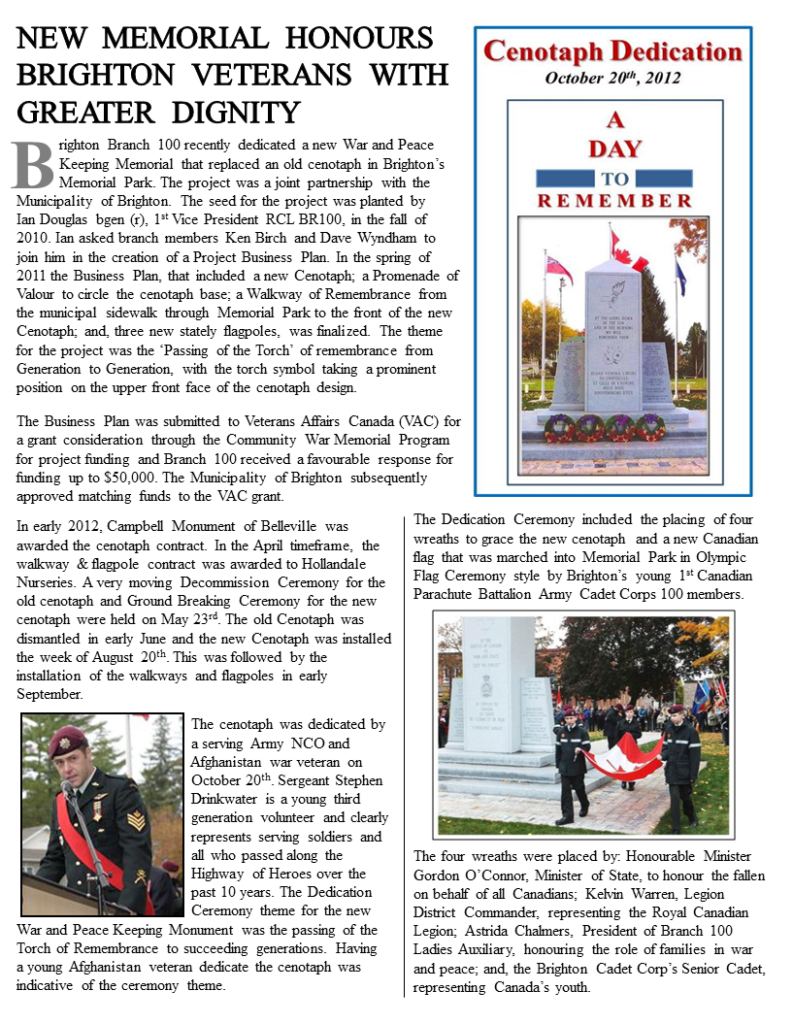
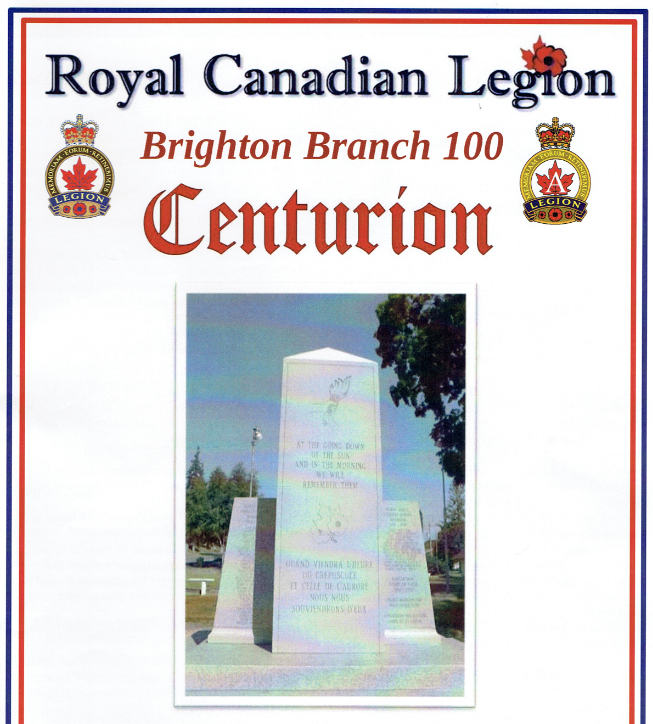
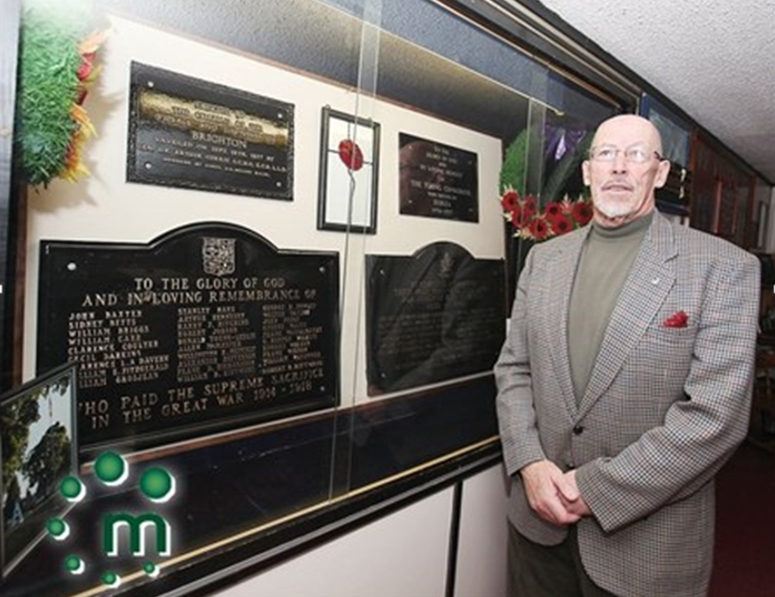
Brighton Cenotaph was a Major Project for the Legion
Revised re-print from Northumberland news Jan 01,2013
Standing next to a display case housing the plaques from the old cenotaph, Brighton Legion first vice president, retired Brigadier General Ian Douglas says the plaques will be rededicated at Memorial Park in the near future.
BRIGHTON — The unveiling of Brighton’s new cenotaph in 2012 was a major project for the Royal Canadian Legion Branch 100, but once started members never looked back.
“It was great and really hectic towards the end, but it was exciting and educational,” said Brighton Legion first vice president, retired Brigadier General Ian Douglas. “We must have seen 40 to 50 separate cenotaphs around the county and area.”
The first phase of the project saw the erection of a new cenotaph and the installation of flag poles and walkways. The next phase will focus on further beautification of Memorial Park and the re-dedication of plaques removed from the old cenotaph.
“It was with no disrespect to the old monument that we decided we needed a new one. It was just time,” he said. “The old one had served us well, and the plaques off the old monument have been refurbished.”
With the help of two friends and Legion members, Comrade Dave Windham and Comrade Ken Birch, Mr. Douglas created a business plan. That led to a Veterans Affairs Canada grant of $50,000, matched by another $50,000 from the Town of Brighton.
“We raised the rest through various means and the engraved paving stone project has handed a bit over $45,000 to the town,” he added, noting a total project cost of $143,000. “I’ve got two stones up there — one for my granddad who was killed in the First World War and one for my dad who served in the Second World War.”
Comrade Douglas says the entire site is now a personal project for him, and everyone involved.
“For anyone who buys one of those stones it isn’t just looking at a nice beautiful monument, they are looking at something personal,” he said.
Asked about the impact the new cenotaph has had on the municipality, Mayor Mark Walas said it has become a point for both council and the community.
“With the matching dollars from the municipality, and some additional fundraising dollars from the community, very quickly it was apparent that this project would take on a life of its own almost immediately,” he said. “Every single person that has commented on it is just taken aback with what a beautiful — and at the same time, magnificent yet sombre — monument is in place in our Memorial Park.”
The Legion offers our Thanks and Gratitude to our Comrades Ian Douglas, Dave Wyndham and Ken Birch for their dedication and effort in completing this Special and Honourable project.